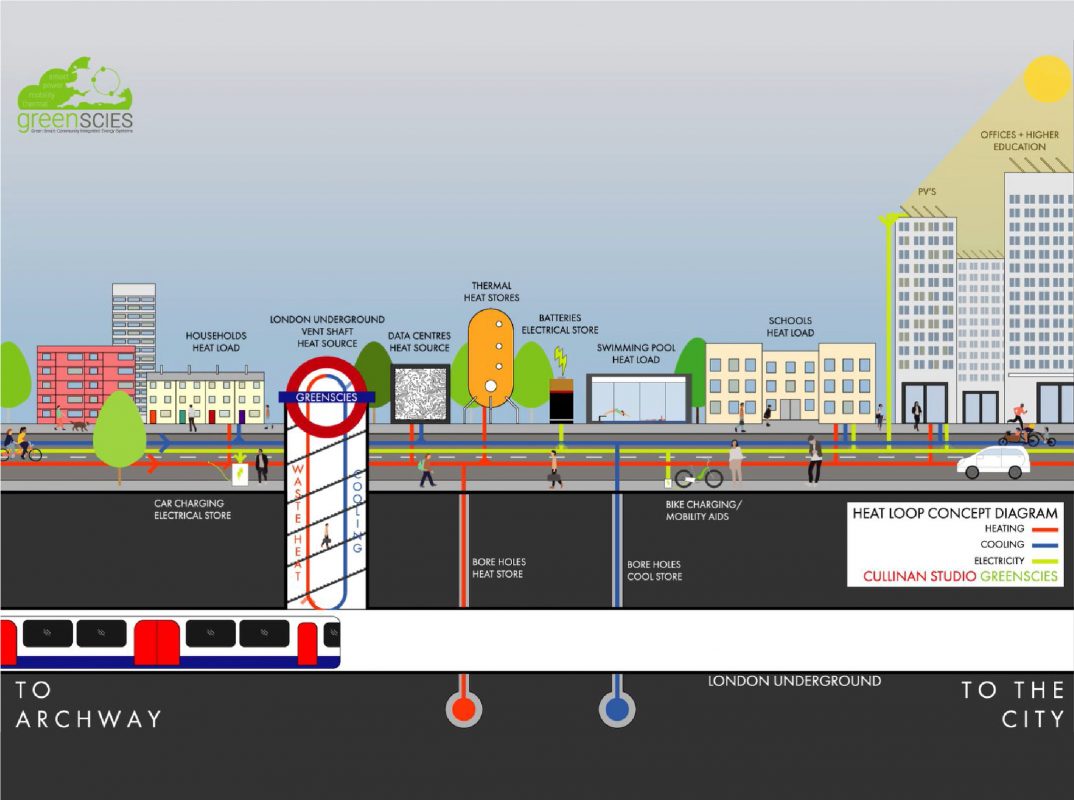
GreenSCIES
Green Smart Community Integrated Energy System
Consumers and businesses based in UK cities stand to benefit from a revolutionary low-carbon smart energy grid called Green Smart Community Integrated Energy System (GreenSCIES) in London and the West Midlands, by project partners: London South Bank University (LSBU), London Borough of Islington (LBI) and Transport for London (TfL).
Concealed underground, the new grid provides an answer to the challenge of powering the inner cities of the future, revolutionising the way we live now and transforming lives, homes and businesses into sustainable energy districts, while tackling fuel poverty and the negative effects of climate change.
As a fifth-generation energy network, GreenSCIES goes further than previous projects in the UK. The system works by sharing heating and cooling between buildings, to ensure a balanced energy supply across the network: waste heat is captured from secondary heat sources including office buildings, data centres and the public transport network. The temperature of the waste heat is then raised or cooled using heat pumps before being distributed to homes, businesses and communities, all year round. By drawing on waste heat produced by data centres underground that support the Internet, the smart grid will channel energy from the Internet to power homes, offices and transport networks of the future. GreenSCIES aims to provide low-carbon and low-cost transport, power and heat to a total of 12,500 homes in the London Borough of Islington and Sandwell in the West Midlands.
GreenSCIES systems will ultimately deliver low carbon heat, mobility and power to an estimated 33,000 residents and nearly 70 local businesses in Islington. The new smart energy grid will help to reduce carbon emissions by an estimated 80% (against conventional systems) while addressing fuel poverty by providing a significant reduction in consumer bills. The system will also deliver air quality improvements by reducing the volume of pollutants while improving the provision of local skills training and job prospects, helping to invigorate local economies.
The smart energy network generates power from renewable energy sources while connecting to the electricity grid and to electric vehicle charging points. It uses artificial intelligence controls to connect flexible electricity demands from heat pumps and electric vehicles to intermittent renewable sources, including solar power, thus, delivering clean, locally produced energy while reducing pollution and supporting a transition to low carbon transport.
The ground-breaking engineering science behind GreenSCIES has been developed by the GreenSCIES consortium, of 16 business partners including some small and medium-sized enterprises (SMEs), under the umbrella of InnovateUK and funded by UK Research and Innovation (UKRI) through the UK government’s Industrial Strategy Challenge Fund. In 2021, GreenSCIES team won the Institute of Refrigeration’s prize for best technical paper.
In future, GreenSCIES plans to establish a new centre of excellence that will work with industry to carry out in-depth research and disseminate results globally. The centre will ensure that the benefits of GreenSCIES systems are achieved in the widest possible range of locations, where the mix of energy supplies and demand patterns vary significantly, and over time. The consortium plans to undertake research on how GreenSCIES could be replicated both in the UK and elsewhere, by looking at the introduction of new business models and policy interventions.